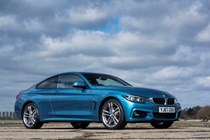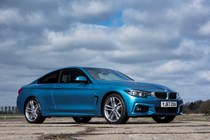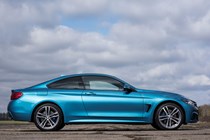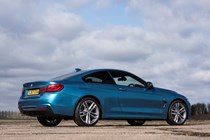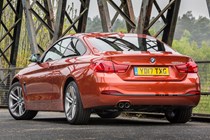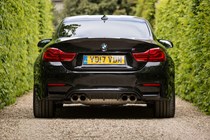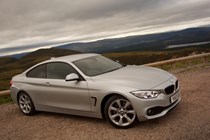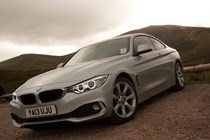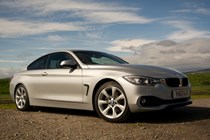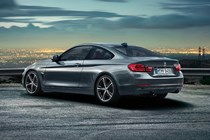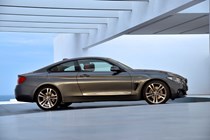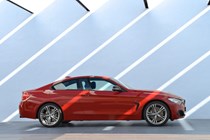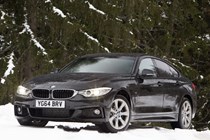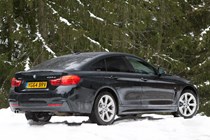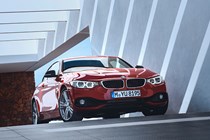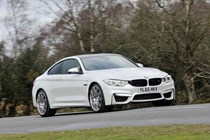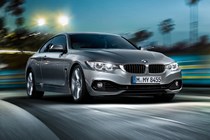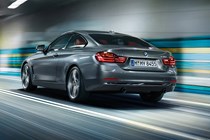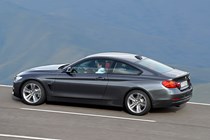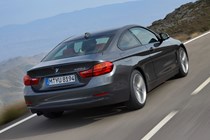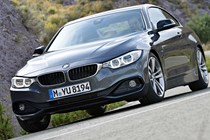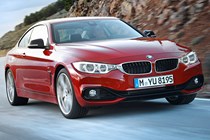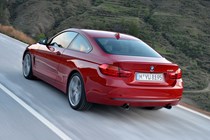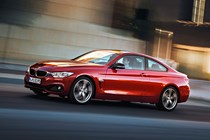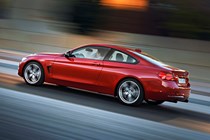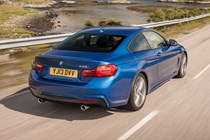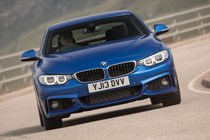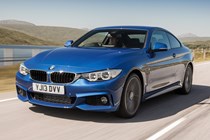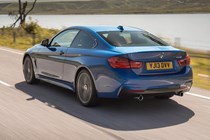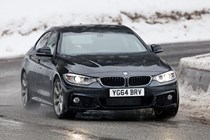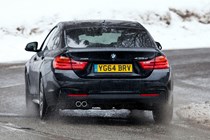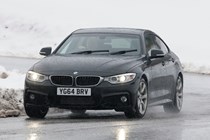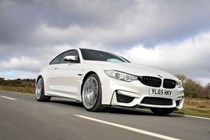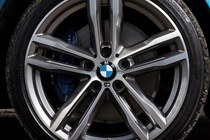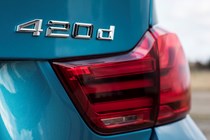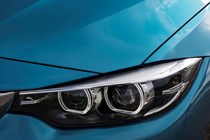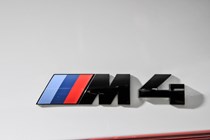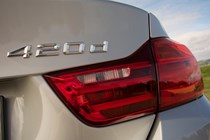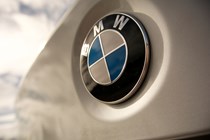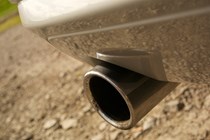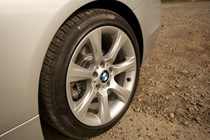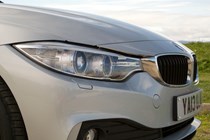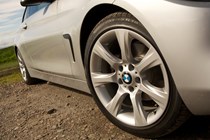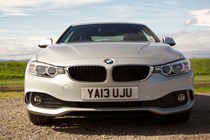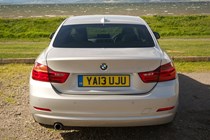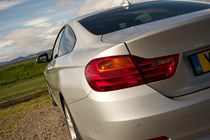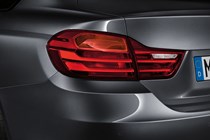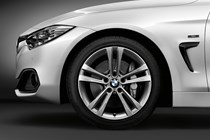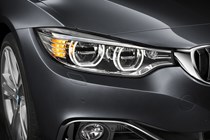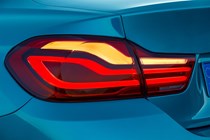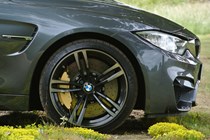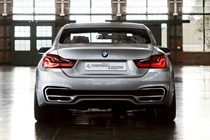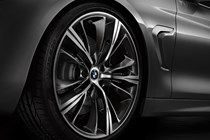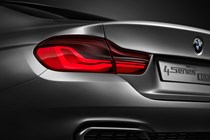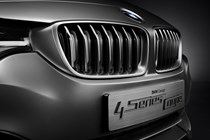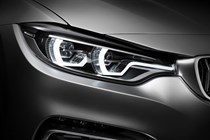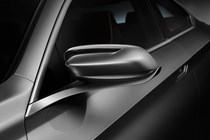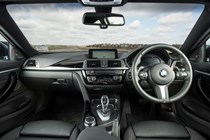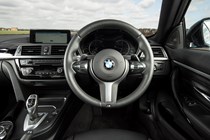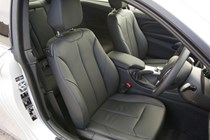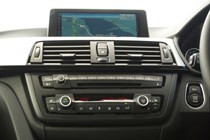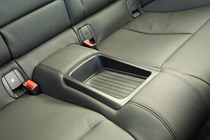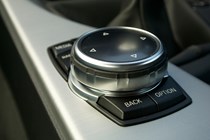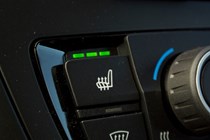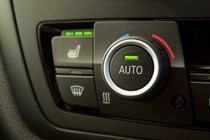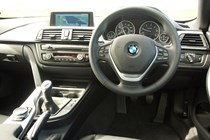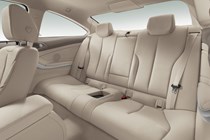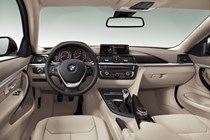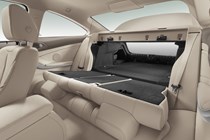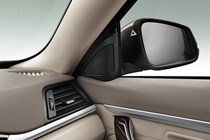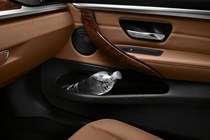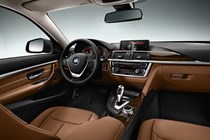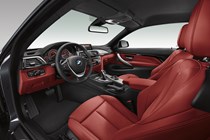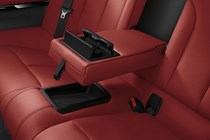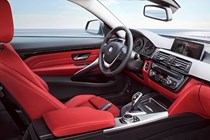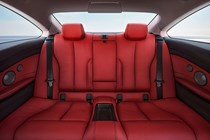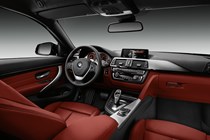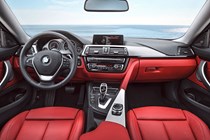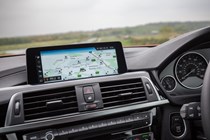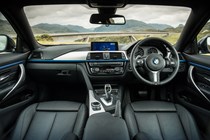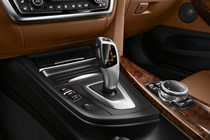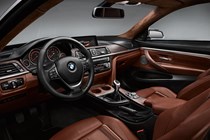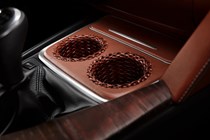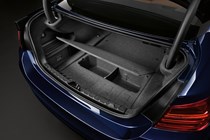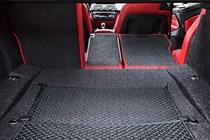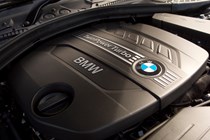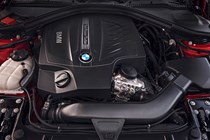
BMW 4-Series Coupe (2013-2020) engines, drive and performance
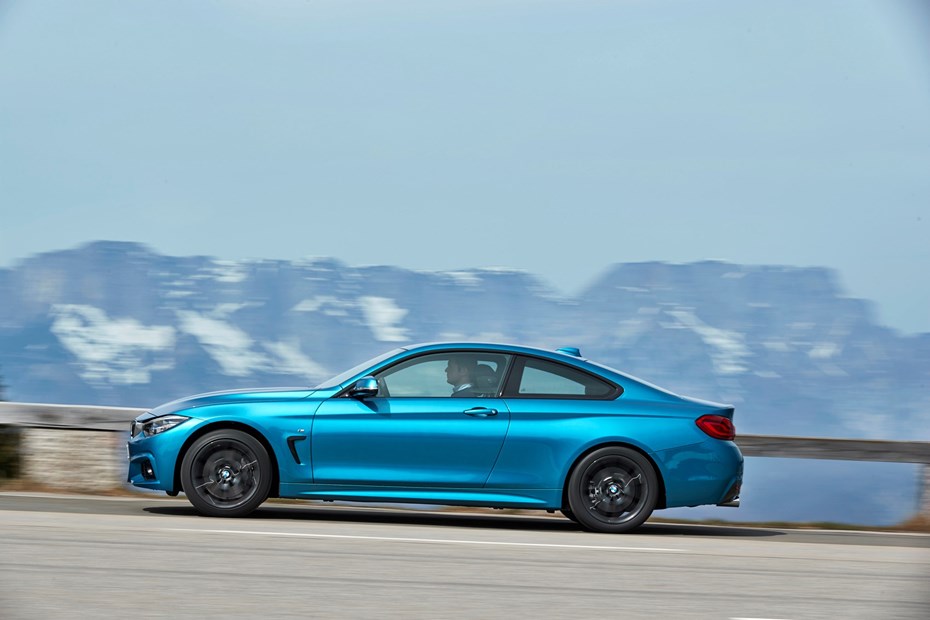
- A car for every budget and requirement
- Best-selling 420d ticks a lot of boxes
- Ballistic M4 Competition
There are six mainstream engines to choose from, three petrol and three diesel, with xDrive all-wheel drive available regardless of fuel choice. On top of this there’s also the standalone M4 Competition model. No matter which you pick, the BMW 4 Series Coupe’s performance is as you’d expect – spirited and refined.
Petrol engines
Representing the entry point to the range is the 420i – a 2.0-litre, four-cylinder motor with 184hp and 290Nm of torque. It’s not the most stimulating choice either in the noise it makes or the way it delivers its power – flat and lacking in punch, manifesting itself in the slowest 0-62mph time of 7.3 seconds for the manual and 7.5 seconds for the automatic gearbox.
Still, it gets along alright and is the cheapest way to select xDrive – in fact it’s the only AWD equipped petrol 4 Series. Be aware though, this version is slower still with a 7.8-second 0-62mph time.
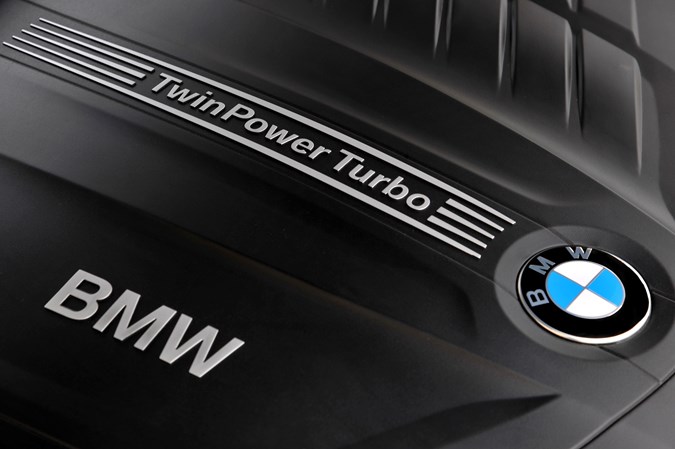
More interesting is the 430i, although it’s a 2.0-litre, four-cylinder engine despite the badge historically suggesting something more exotic. The advantage here though is decent economy on a par with the 420i, despite a hike in power.
It’s still not particularly vocal but at least its 252hp and 350Nm of torque means swift performance – expect 0-62mph in 5.8 seconds and strong mid-range performance. This means you can make meaningful progress without having to work the engine hard, but our only complaint here is the engine’s character; it delivers its power low-down like a diesel, so there’s no enjoyment to be had revving it out to the redline. In which case, why not just get a torquier, more economical diesel?
Finally there’s the model you pick with your heart and not your head, the 440i. A proper BMW straight-six, this fabulous motor packs 326hp and 450Nm for an M4-junior 0-62mph sprint of five seconds. In reality though it feels more grown-up and mature than the full-fat M-car, with performance you can use everyday without worrying about getting on the wrong side of the law. It still sounds good and is a great all-rounder when it comes to a sports saloon.
Diesel engines
All of these are available with xDrive all-wheel drive, with the most powerful 435d exclusively so.
Without doubt the biggest seller in the UK range is the 420d, and with good reason too; it might be economical but the four-cylinder diesel still produces 190hp and 400Nm, the latter at 1,450rpm.
Despite best-in-range economy it has the ability to sprint from 0-62mph in 7.4 seconds with the manual gearbox and 7.1 seconds with the automatic. The xDrive sits in between with a 7.3-second time. It’s the mid-range grunt that hits home the most though, and in-gear the 420d feels almost as fast as the more powerful 440i, but it’s also a fairly grumbly affair – particularly from outside the car.
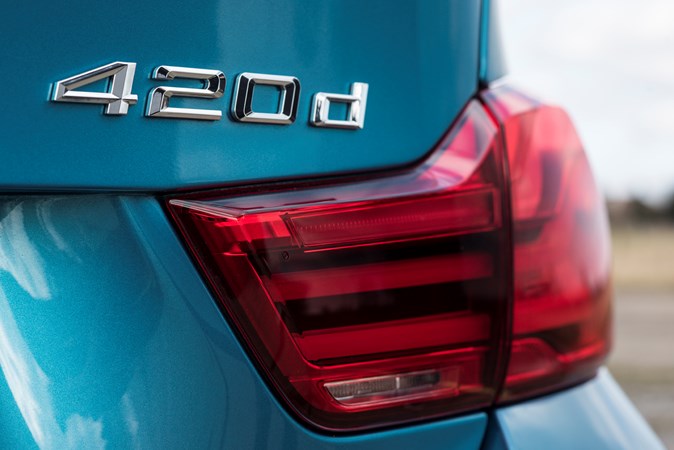
Next up is the six-cylinder 430d, a strong contender with a 5.5 second 0-62mph time and an even quicker 5.2-second time in xDrive form. There’s bags of mid-range power under your right foot – 258hp and 560Nm of it – and combines this performance with good fuel economy and a bassy, rousing sound from the tailpipes.
For the ultimate in mainstream 4 Series speed though you’ll want the all-wheel-drive only 435d. It’s almost viewed as a diesel-powered M4 with 313hp and an enormous 630Nm a mere flex of your ankle away.
This finds its way to the tarmac through all four wheels meaning a 0-62mph sprint of 4.7 seconds, despite offering a better fuel economy than any of the petrol engines.
It’s quite a potent mix and in the real world of narrow streets and congested roads, will feel every bit as fast as the range-topping M4.
High performance M4 Competition
The BMW M4’s performance is simply ballistic. The firm claims the car can sprint from 0-62mph in just four seconds, and provided you can get the traction that’s a figure we can well believe.

It’s the way this twin-turbocharged straight six-cylinder engine delivers its 450hp that impresses the most though. A short inlet tract for the two turbochargers improves response and means torque is instantly available.
There’s no let-up in the way the BMW increases its speed, only pausing for the briefest of gearshifts as the speedo needle swings violently clockwise and the numbers get higher. Certainly in the mid-range, and for overtaking especially, the M4 is devastatingly quick to accelerate.
It enjoys being worked hard too, the exhaust note (and the sound piped into the car) changing quite dramatically around 4,000rpm, with an appetite for the red line not often becoming of turbocharged cars. Though at lower speeds and wide open throttle there is an engaging and addictive set of sounds from the turbochargers passing through the bulkhead as well.
Two gearboxes available
A six-speed manual gearbox is available on lower-powered engines, while the smooth-shifting eight-speed automatic can be specified as an option.

The two- and all-wheel drive 430d models, plus the BMW 435d xDrive, come with the automatic as standard.
It’s an impressive unit that can either blur its gears together effortlessly, provide punchy, rapid changes or even surrender control to the manual paddles behind the steering wheel.
Engines no longer available
Prior to the 440i was the 435i, using the same formula of a 3.0-litre, twin-turbocharged six-cylinder petrol engine. Performance is stunning too, with the engine delivering a serious punch from the get-go; peak torque arrives at only 1,200rpm so you’re not forever dropping down the gears to make progress. Do so and the engine remains impressively refined right to the redline, and makes a wonderful howling sound as it does.
The benchmark 0-62mph sprint only takes 5.1 seconds, helped ably by the optional eight-speed automatic gearbox (a six-speed manual is standard) shifting between cogs so quickly. Opt to manipulate the gears yourself, either by tipping the lever to the side and then fore and aft, or the steering wheel mounted paddles, and it’ll hold onto gears as long as you want to.
The M4 Competition replaced the standard M4, which had a little less power at 431hp and a 0.1-second slower 0-62mph time of 4.1 seconds.
Handling
- Modifications to 3 Series track width and ride height…
- …results in a low-slung, flat-handling coupe
- Overall a very good drive, although slightly numb steering
This is not just a rebodied 3 Series, as BMW is keen to point out – underneath the metal lies a comprehensive re-working of the saloon’s suspension and drivetrain components.
The 45mm wider front track and 80mm wider rear axle than before means not only is the car’s stance improved but the chassis offers more grip too. It also boasted the accolade of having the lowest centre of gravity in the whole of the BMW range when launched and this manifests itself in an admirable lack of bodyroll as the car pitches into a corner. On the road you get a real sense of stability and certainly in the dry, you really do have to drive with abandon to unstick the 4 Series Coupe – even on the track.
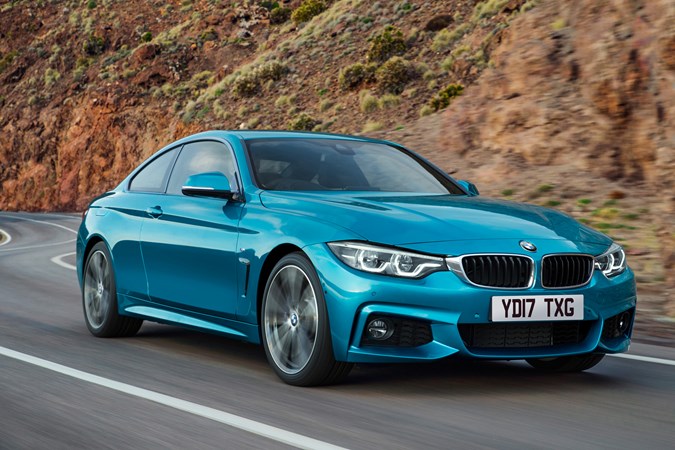
Cars with the optional adaptive suspension can adapt the characteristics through the Driving Experience Control, along with the steering, throttle and gearshift. In normal driving the 4 Series feels utterly planted, with the cars we drove behaving admirably even in comfort mode, with little roll, pitch or dive displayed.
While the steering is an electric system it does offer enough feedback and feel to place the BMW in position with precision. It still lacks a little feel, but is well-weighted and the optional Sports steering varies the input required depending on the car’s speed.
The 4 Series responds to driver inputs with sharpness and precision, although there is a tendency for it to understeer at the limit (the front end of the car pushing wide in a corner) perhaps due to the prodigious grip of the rear wheels.
In general terms though it’s a very balanced car and if you want it there is oversteer available. You’ll have to be travelling very quickly indeed, or find a wet and greasy road, to take any advantage of it though.
Do I need xDrive?
The all-wheel drive system installed on all BMWs goes by the name of xDrive, but on the 4 Series it’s optional on some engines and standard on others.
If you’ve got the choice, we’d suggest in most cases a set of winter tyres will do a better job of providing the grip and traction you need, and at lower cost, both in terms of purchase price, but also fuel economy and CO2 emissions since all-wheel drive is less efficient and weighs more.
However, if you do pick xDrive on your 4 Series, it’s still fabulous to drive – you’ll hardly notice the difference in pretty much all situations.
Impressive BMW M4 Competition handling
This BMW M4 is actually lighter than the old M3 Coupe, thanks to a roof, boot lid and even the main driveshaft made out of carbon fibre as well as bonnet and wings made from aluminium. Savings are also made in the seats, alloy wheels and electric power steering.
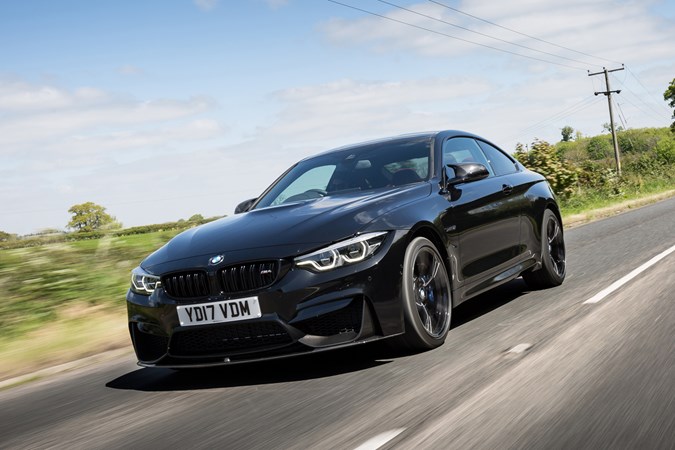
What this means is the BMW M4 exhibits some truly impressive handling traits, with agility and nimbleness that belies its size and comfort. Turn in is sharp, and though understeer is present if pushing on too fast in tighter turns, with the electronic stability systems turned off its easily dialled out with an application of the accelerator.
In fact the M4 is incredibly well balanced, and those looking to play with the car’s trajectory can do so easily with very little steering input – unless you tread too far on the right pedal, at which point you’ll need quick hands and plenty of opposite lock on the thick-rimmed wheel to gather it up.
Of course you can leave the stability systems switched on, at which point it won’t let the car get out of shape at all. It can be a frustrating experience though, with the orange traction control light flickering away seemingly endlessly on anything but the grippiest or smoothest of roads as the car cuts its power.
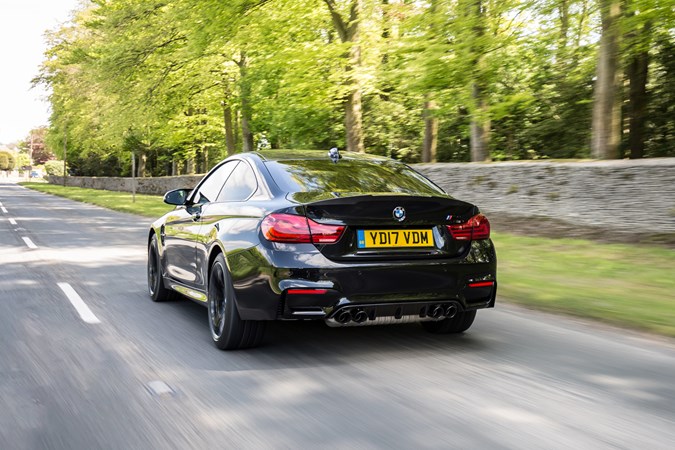
A far better compromise is the half-way house MDM setting, which allows a certain amount of slip angle before reducing power and regaining control of your wayward M4. It’s the ultimate in driver flattery, sure to impress friends and bystanders who will think you’re controlling it all yourself.
In Comfort mode there is minimal body roll to be experienced, but selecting Sport or Sport + soon changes that and ties the M4’s body down a little tighter – the latter feeling almost completely flat through the bends. Selecting the same for the steering adds extra weight, but no appreciable increase in feel and in truth you’re best to leave this element in Comfort mode however.
The M4 Competition gets adaptive suspension as standard, along with 20-inch alloys, an active locking differential and Sport+ drive mode.


